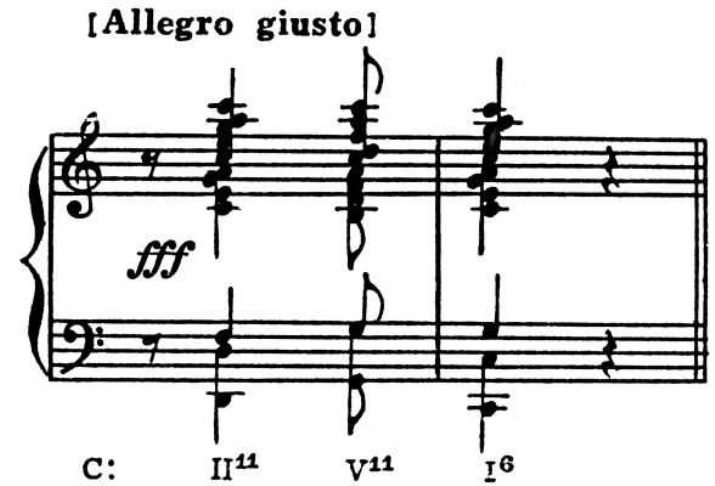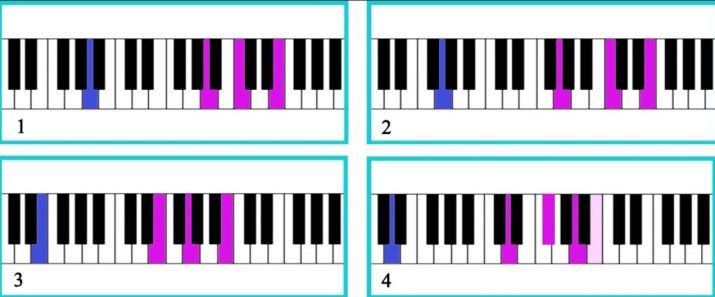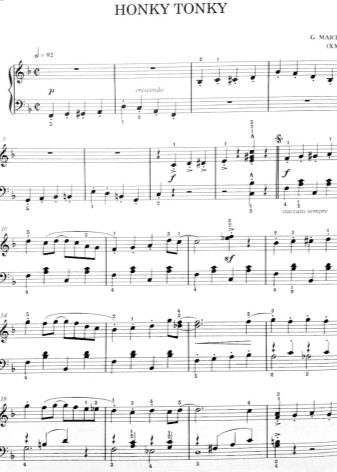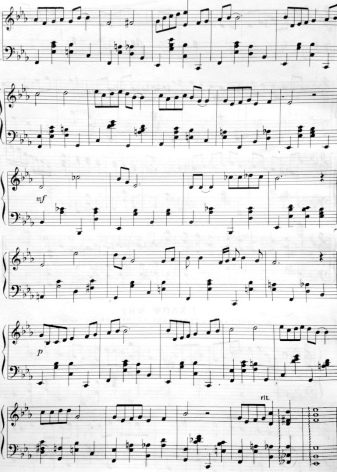Jazz Chords for Piano

The structure of jazz chords is borrowed from professional music. They are closely intertwined with rhythm, melody and harmony. Jazz is a synthesis of musical elements from American, African and European cultures. It is characterized by the most complex way of transferring isolated rhythmic linear segments and by its uniqueness.
The melody of jazz is very versatile. Jazz harmony is distinguished by its tonality and functionality. A harmonious chain of musical fragments is built using chords.

Basic types
Unlike some other instruments in a jazz orchestra, which are limited to playing single notes, a wide variety of chords can be played on the piano. Their sound composition creates a unique atmosphere.

Jazz piano chords are a complex system. In addition to the classical triad, complex accords are widespread in jazz.
Let's consider the sequence of their formation.
- Adding an extra third to the triad produces a seventh chord.... In classical music, he is perceived as unstable. In jazz, the seventh chord takes on stability. Other chords are based on it using add-ons.
- Adding a subsequent third turns a seventh chord to a nonchord... It contains 4 thirds, 3 fifths, 2 septims, 3 triads, 2 seventh chords and a nona. The large non-chord produces acoustically correct discord. For this reason, it is almost never used in the classical school.
- Overlapping another third on the nonchord above forms an undecimaccord... This six-tone harmony is constructed from 5 thirds.
- You can complicate the undecimacord to the third decimacord.... It consists of 7 sounds.2 thirds are added to the nonchord on top. The topmost note departs from the main tone to terzdecima, and the previous one to undecima. They are often very discordant.

Rhythmic patterns and melody are built on the harmonic chord sequence. Three-chord progression is characterized by a melody delay on any note of the scale. Matching 2 of 4 chords creates a harmonic rhythm. Usually, chord progressions are chosen to fulfill the intended melody. They are inherent in popular African music.
Traditionally, the chord progression is indicated by Roman numerals. The II-V-I progression is a commonly used harmonic turnover in jazz.
If it is impossible to display the entire harmonic structure of a piece of music, it can be easily expanded.


Complex dominant chords
In jazz, the dominant is one of the most modifiable elements, since the major seventh chord is able to get along with other supersonic sounds. Dominant formations are easy to adapt to complex chords. A seventh chord built from the V degree (dominant) of a major and a harmonic minor is called a dominant seventh chord. It consists of 4 sounds. Its base is the lowest sound - prima. The composition also includes a major third, a clean fifth, and a minor seventh. A dominant seventh chord is considered an acoustically correct dissonance. It has 3 inversions: quintsext chord, tertsquart chord and second chord.


Practical examples
Listen to jazz music more often. The melody is usually played with the right hand, while the left hand is used to play chords.
To master the technique of performing jazz pieces, you need to practice.
- Try to memorize the major seventh chord first. (1 3 5 7). Then start mastering the minor seventh chord (1 b3 5 b7), the dominant seventh chord (1 3 5 b7), the semi-diminished chord (1 b3 b5 b7), the diminished chord (1 b3 b5 bb7). For example, to play a minor seventh chord, press the following keys: C, E flat, G, B flat.
- Learn the construction of the basic types of chords and learn how to play their inversions in the same key... Then transpose them to other keys. And you also need to master the decoding of the letter designations of the notes.
- When playing the piano, improvise... Don't be afraid of wrong notes, as they can sound great at times. Musicians are always looking for beautiful chord progressions by moving semitones up or down.

You can purchase sheet music featuring famous works by jazz musicians. Learn the chord progressions of the songs you are about to play on the piano or synthesizer. Try transferring them from one song to another.


For more on jazz piano chords, see the following video.








